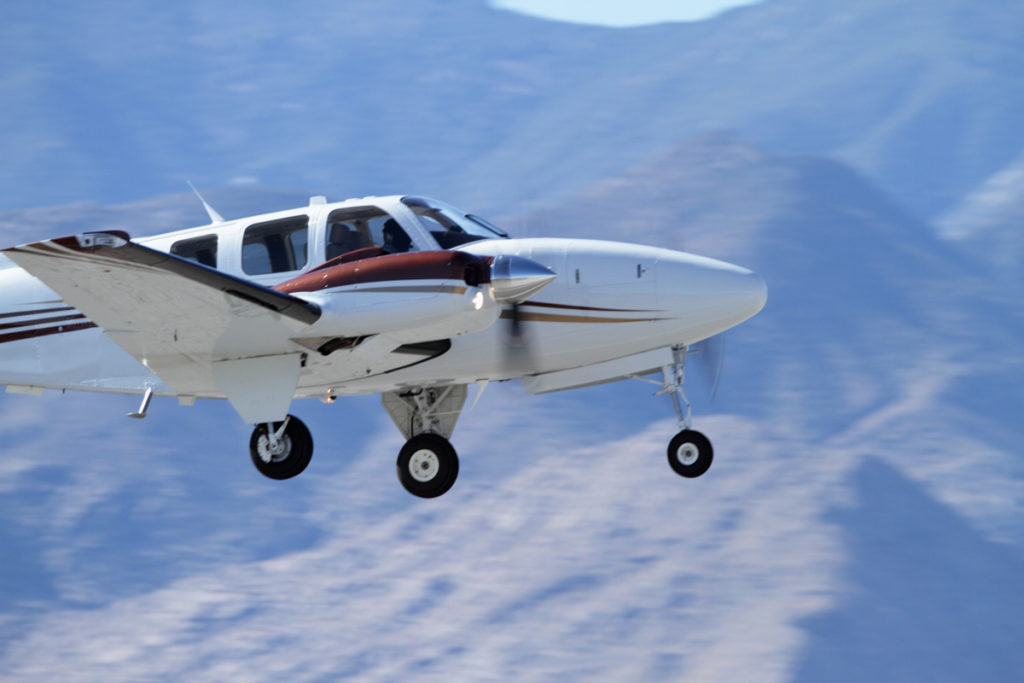The more you can simulate an actual condition with equipment that acts exactly like the real thing, the easier it is to learn how to handle the problem. This not only applies to learning the correct recovery of a dangerous aircraft problem but it also applies to not harming the actual aircraft or passengers by doing aggressive maneuvers such as engine shut downs.
The following statement is from an aircraft multi engine training facility’s page who only teaches in YOUR aircraft. I have highlighted appropriate sections of this facility’s training website.
While we feel that while handling the aircraft on one engine is very important (and could be accomplished safely), from a liability standpoint, we cannot do so. Our INSTRUCTION SOP mandates that no simulation of an engine failure will take place between rotation speed and 500’ AGL.
Specific to piston engine aircraft training, we will ensure that we are not shock cooling the engine, while at the same time ensuring that the pilot is safe and proficient in single engine operations. Overall, our focused goal is training initial and recurrent pilots to perform the proper procedures and so properly handle any situation that arises. That pilot, in the event of a real emergency, will safely revert to those proper procedures.
Therefore, when we plan to perform single engine operations, ample time is provided to fully brief and review the procedures ahead of time – at no point will an engine be shut down during your training.
So let’s break this down:
1. Handling the aircraft on one engine is very important.
2. This company cannot do it.
3. They will not simulate engine failure between rotation speed and 500 feet AGL.
I guess they feel that no engine will fail between rotation and 500 feet AGL so you are just out of luck with your nose pointing skyward and a total engine failure on a multi engine airplane or it just never happens. Do you think that salvaging an airplane on one engine below 500 feet AGL might be a little different from doing it at ten thousand feet? The loss of an engine on a multi engine aircraft below 500 feet AGL is probably the most dangerous. Without the right training you wont make it.
4. So they won’t shut down an engine but they will ensure you can handle the problem.
Of course you don’t want to damage an engine and high powered turbo charged engines can be damaged with training including shut downs. So if they don’t shut down the engine, then how do you learn to handle the problem? Not at altitude. It is not the same.
5. So their theory is, that based on some type of non-shut down training at the higher altitudes while simulating an engine failure, the pilot will learn what to do.
This reminds me of a medical school who told you to read the book and then go do a surgical procedure.
6. They then state; at no part of your training will an engine be shut down.
Then how do you know how it feels to fly on one engine for a considerable distance and bring that aircraft in on one engine to a safe landing. Sorry, with their training curriculum for loss of an engine on a twin engine piston aircraft, you will never know what to do.
So what is the bottom line to this type of training as dictated by this company’s website? They can’t afford a half a million dollar plus simulator that you can shut the engine down in weather and take the aircraft in for a safe landing under a gross load. Remember, that simulator can cut an engine from rotation to 500 feet AGL and can give you the experience of what it is really like. Sight, sound, control input to the yoke and rudder, gross weight and numerous other factors just like it would happen in real life. Further, recovery from an engine loss can be successful but it is not like losing an engine at ten thousand feet.
Those who tell you that we can teach you, but we can’t do certain things to keep you from getting injured, are basically telling you they don’t have the money to spend on high quality sims and/or the instructors to teach you the right way to handle numerous emergencies.
Two recent engine loss accidents at low altitudes, one a Cessna 310R at John Wayne Airport and the other a Cessna 421C, both failed to get back to the airport from a takeoff.
Aircraft Simulator Training has high quality motion sims that can create engine loss from lift off to 500 feet AGL. The aircraft can be saved if you know what to do and how to do it. You cannot rely on the FAA way at 300 feet AGL to save an aircraft on an engine loss. You don’t have time and the overload will catch you before you can recover. It is just common sense.
We train for single engine cuts after takeoff. We teach you how to stabilize the aircraft. We teach you how to get the airplane back on the ground. We do this for the innocent people in the back of the plane and for you. Yes, single engine safety can be accomplished. You did not learn how to ride a bicycle the first time you got on. You practiced and you had a mentor. That is what we do. We mentor and train you to make you confident.
